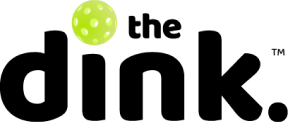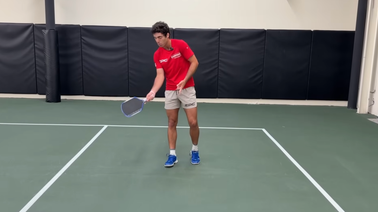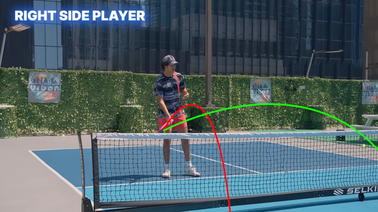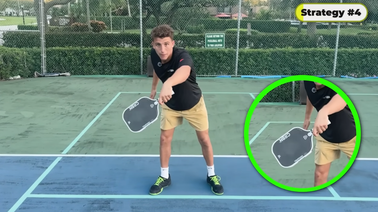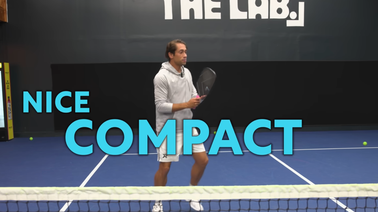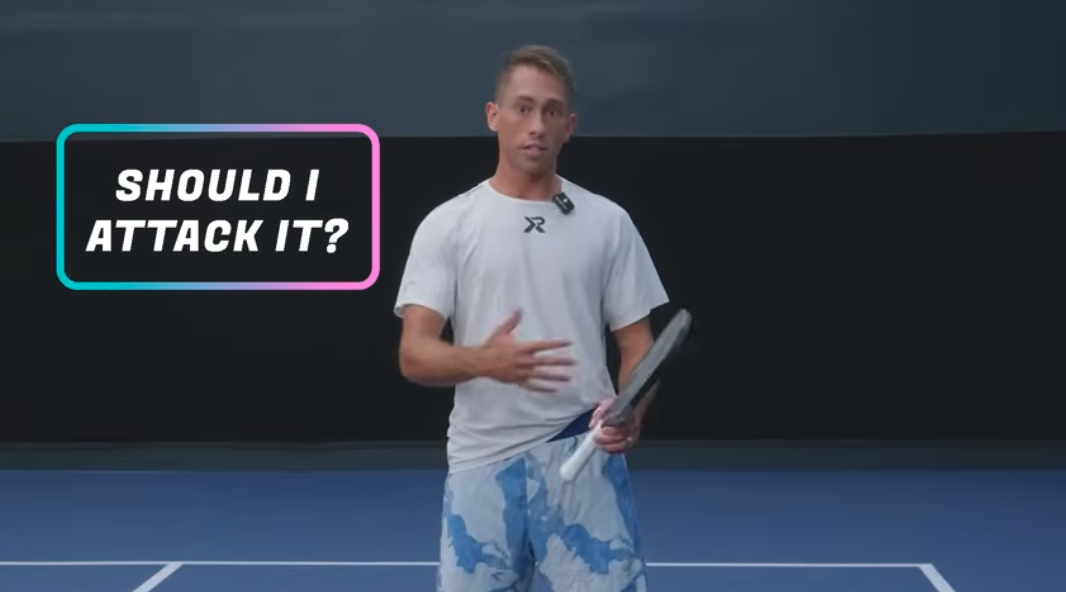
The Backhand Decision Tree: One Pro's Real-Time Strategy for Cooking at the Kitchen
Zane Navratil has boiled the key steps for a successful backhand dink down to five critical questions he cycles through in real-time. Learn his framework and watch your shot selection – and winning percentage – improve dramatically.
Shot selection is everything in competitive pickleball, especially at the kitchen line when points can move very fast and your reaction time is reduced to milliseconds.
Things get even more complex on the backhand side. Should you hit a one-hander or a twoey? Attack out of the air or reset off the bounce? Down the line or through the middle?
Professional player Zane Navratil breaks down the exact thought process he goes through to help him navigate these complex decisions with confidence.
He calls it the backhand decision tree. It's a rapid series of options he ticks through in real time to determine the best approach to each and every ball he hits from the kitchen line on his backhand side.
- Should I take the ball out of the air?
- Should I attack it?
- Should I let it bounce?
- One-handed backhand or two?
- Should I attack the twoey?
With practice, this can become second nature for you, too. The result: more points won with confidence.
Should I Take the Ball Out of the Air?
Taking the ball out of the air should be your first instinct when dinking. Here's why:
- Contact the ball at its highest point. By taking the ball before it bounces, you can typically make contact higher than you would after the bounce. This makes it easier to hit down and aggressively on the ball.
- Hold your position at the kitchen line. This lesser-known reason is equally important. By staying aggressive and taking balls out of the air, you maintain your court position and prevent your opponents from pushing you back into the transition zone.
When you consistently take balls out of the air, you put pressure on your opponents to hit shorter, more precise dinks. This often leads to more errors from the other side of the net.
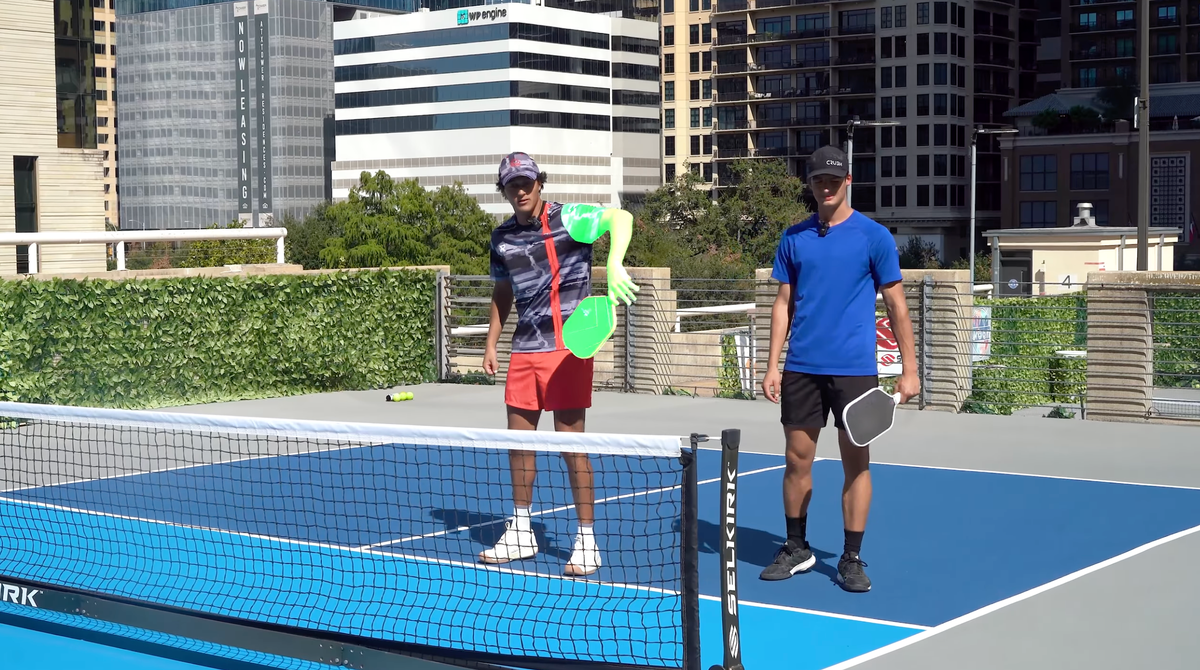
Should I Attack It?
The decision to attack depends on several factors:
- Your personal skill set
- Your opponent's skill set
- Your opponent's positioning
- The height and quality of the ball
Generally speaking, the higher your point of contact the better your chances for a successful attack out of the air.
Players with strong aerial attacks and quick hands can attack from lower positions than those still developing these skills. Ben Johns is famous for hitting backhand flicks from his shoelaces. For the rest of us mere mortals, it's best to reset out of the air until something higher and more optimal comes along.
Should I Let the Ball Bounce?
If you're looking to take the ball out of the air but can't reach it or it's outside your range, let it bounce. Your "range" is the area where you can consistently make the shot while staying balanced afterward.
Don't overextend trying to take every ball out of the air. Sometimes the smart play is to let it bounce and reset.

One-Handed Backhand or Two-Handed Backhand?
Once the ball has bounced, you need to decide between a one-handed slice or reset and a two-handed backhand. The key difference is the contact point and range:
- One-handed backhand: This shot has far more range than the two-handed option. Use this when the ball is farther away from your body or when you're stretched out. You can also mix this shot in to add heavy backspin and keep your opponent on their toes.
- Two-handed backhand: This offers more offensive options. If the ball bounces in front of you and is within your range for a two-hander, choose this shot. You'll have the ability to attack or hit a more aggressive dink compared to the one-handed slice.
Should I Attack the Two-Handed Backhand?
Again, this depends on multiple factors:
- The height of the ball
- Your skill set
- Your opponent's positioning
- Their skill set
There's no definitive answer, but a good rule of thumb is to attack anything where you feel you have greater than a 50% chance of winning the point. These percentages will look different for every player, so track your own success rate mentally.
Learning from Match Examples
A key step toward seeing real improvement in your game is critical self-reflection. After the dust has settled on a match, take a few minutes to ask yourself two critical questions:
- How was my attack strategy?
- What points did I deserve to win and where did I just get lucky?
"Asking these questions is the first step in understanding your own game, which can help you answer the question of whether you should or should not attack," says Zane.
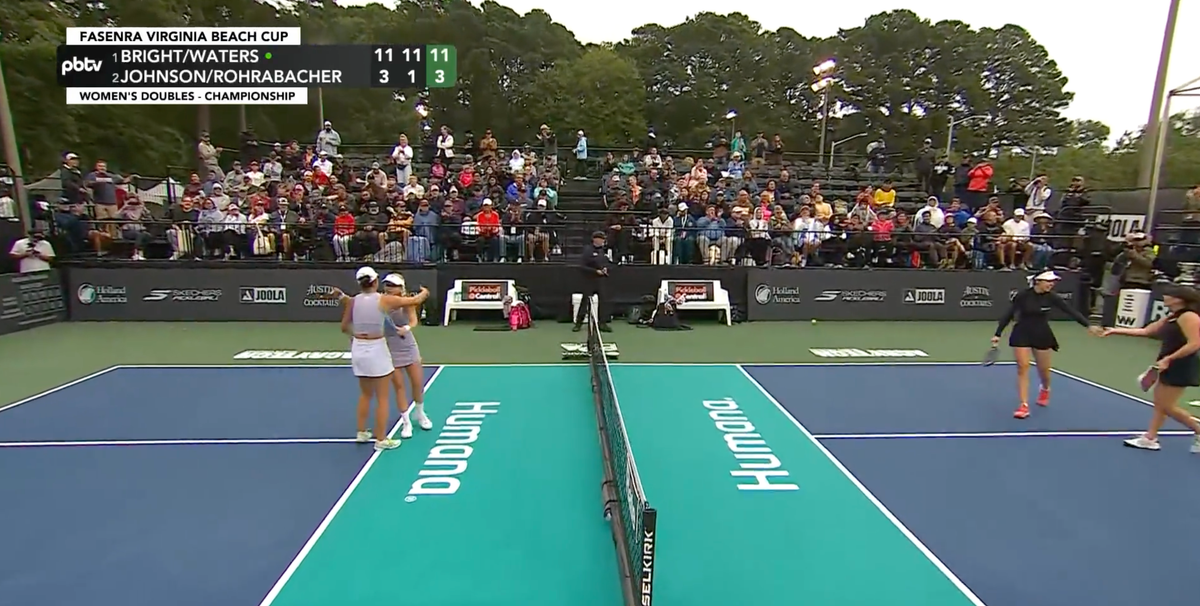
Then consider what you would have done differently. This self-reflection is the first step in understanding your own game and improving your shot selection.
Zane does this all the time. And Anna Bright stresses this time and time again as a key to the success with her and her partner Anna Leigh Waters: "Reflect honestly, individually and collectively."
Putting It All Together
The backhand decision tree is a framework you can use to select and execute better shots at the kitchen line. Obviously, time won't stand still for you to run through each step before hitting the ball. But like anything, practice makes perfect.
The more you drill this with intention – and take time to analyze your decisions post-match – the more automatic it'll become.

Love Pickleball? Join 100k+ readers for free weekly tips, news & gear deals.
Subscribe to The DinkGet 15% off pickleball gear at Midwest Raquet Sports
